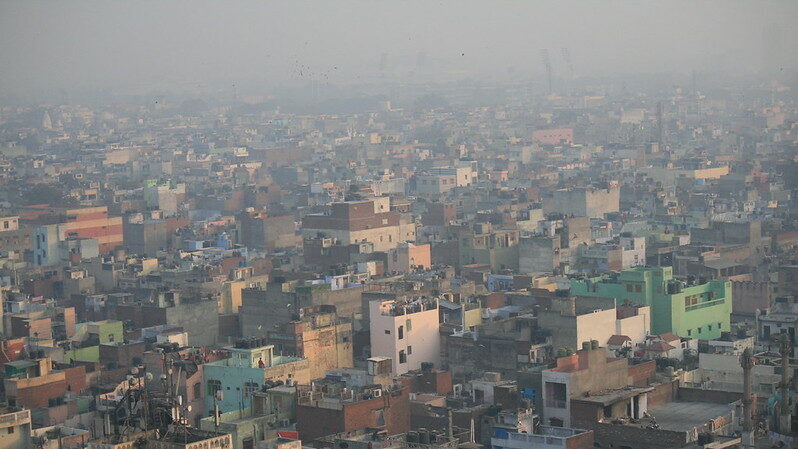
Pollution in many south Indian cities more than WHO levels: Report

Average pollution levels in many south Indian cities are much higher than the new WHO air quality guidelines, indicating that air pollution as a public health crisis is not restricted to cities like Delhi, according to an analysis by Greenpeace India.
The non-profit organisation recently analysed air quality data from 10 southern cities between November 2020 and November 2021.
“The analysis of Central Pollution Control Board (CPCB) data reveals that the average pollution levels in these 10 south Indian cities are much higher than new WHO air quality guidelines,” said the Greenpeace report.
The WHO had announced updated air quality guidelines on September 22 for the first time in 15 years.
The new guidelines recommend annual levels of fine particulate matter (PM2.5) at 5 and PM10 levels at 15, as compared to the 2005 recommendations of 10 and 20 respectively.
Also read: Panel orders closure of educational institutions in NCR to fight pollution
PM2.5 and PM10 refer to particles with a diameter of 2.5 micrometres or less and 10 micrometres, respectively.
Fine particulate matter can penetrate through the lungs and further enter the body through the blood stream, affecting all major organs, according to the WHO. Exposure to PM2.5 can cause diseases both to the cardiovascular and respiratory system, it said.
India’s National Ambient Air Quality (NAAQ) standards recommend annual PM2.5 and PM10 levels of 40 and 60 respectively.
In terms of PM2.5 limits, all the cities measured – Vishakapatnam, Hyderabad, Coimbatore, Bengaluru, Amaravati, Mangalore, Kochi, Chennai, Mysuru and Puducherry – were well above the WHO guidelines, according to the analysis. Both Vishakapatnam and Hyderabad were also above the NAAQ standards but the others were within those limits.
It was a similar scenario in the case of PM10 limits with pollution in all these cities above the WHO-recommended air quality levels. When it came to NAAQ levels, Vishakapatnam, Hyderabad, Bengaluru and Mangalore were above the national standards while Chennai, Amaravati, Kochi, Mysuru, Coimbatore and Puducherry within them.
Also read: ‘We give you 24 hours’: SC criticises Delhi, Centre over pollution crisis
“India’s Central Pollution Control Board must introduce new national ambient air quality standards based on WHO air quality guidelines which are based on the latest scientific understanding,” said the Greenpeace report.
“The cities under the National Clean Air Programme should also express the ambition to move to NAAQS in a time-bound manner first and then should have a timeline to move towards the WHO guidelines,” it added.


